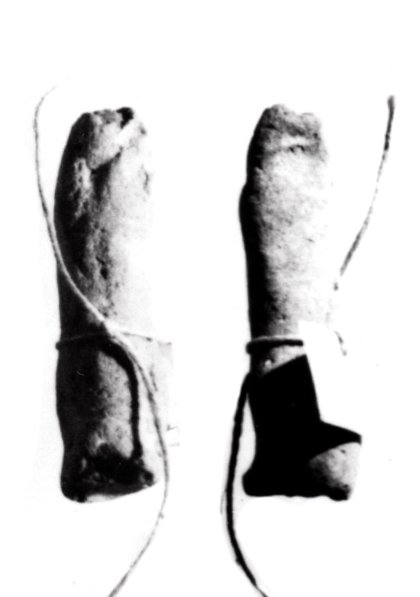
Ushabti
Egyptian Art
| Place of production | Egypt |
|---|---|
| Date | 7th and 6th centuries B.C. |
| Object type | sculpture |
| Medium, technique | Bronze; inlaid with gold and rock crystal |
| Dimensions | height: 15 cm |
| Inventory number | 51.2356 |
| Collection | Egyptian Art |
| On view | Museum of Fine Arts, Basement Floor, Ancient Egypt, Temples and gods |
The statuette represents the traditional image of a seated cat, with its tail placed on the ground along the right side of the body. The eyes are inlaid with gold. One of the rock crystal pupils that once decorated the eyes has been lost. The ears are carved. The crown of the head is decorated with a carved representation of a scarab beetle. The skillful technique and delicate elaboration of the body contours and arches indicate that the object must have been manufactured during the Saite Period.
According to the ancient Egyptians, the gods could express either their destructive or benevolent, regenerative sides to mortals. The “cat” aspect of the feline goddess (Bastet) emphasises her domesticated, mild, and accommodating nature, in contrast to the uncontrollably ferocious and bloodthirsty features of the lioness (Sekhmet/Tefnut). Both aspects of the goddess are closely linked to the sun-god and solar concepts. According to the Myth of the Solar Eye, she is the daughter of the god who was angered by something and as a reaction to this transformed herself into the shape of a lioness (or a wild cat), abandoned her father and strayed into the remote desert areas of the South. The sun-god dispatched the baboon-shaped Thoth in pursuit of her, and he managed to bring her back in a domesticated and pacified car form.
During the first millennium BC, the main religious center of the goddess Bastet venerated in cat form was the town of Bubastis in the Eastern Delta. One of the oldest cemeteries established for burials of sacred animals was that of Bastet of Bubastis. Hundreds of statuettes like this may well have been presented as votive offerings to the goddess. The statue type presumably became widespread after the Libyan Dynasty with its seat at Bubastis (Twenty-second Dynasty) occupied the throne around 900 BC.
This record is subject to revision due to ongoing research.